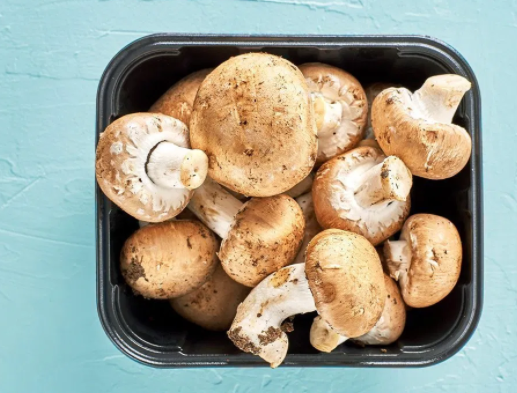
Given that diabetes is characterized by high blood sugar levels, following a healthy diet that helps manage blood sugar is essential to treatment (1Trusted Source).
However, that can be easier said than done, and people with diabetes may find it difficult to decide which foods to eat and avoid.
Mushrooms are low in carbs and sugar and considered to have anti-diabetic properties.
This article explains why mushrooms are an excellent choice if you have diabetes.
Nutrition
There are many types of mushrooms, including the traditional button or white mushroom, shiitake, portobello, and oyster mushrooms to name a few.
Despite their varying appearance and taste, they all have similar nutritional profiles, which are characterized by low sugar and fat contents.
One cup (70 grams) of raw mushrooms provides the following (2):
Calories: 15
Carbs: 2 grams
Sugar: 1 gram
Protein: 2 grams
Fat: 0 grams
Vitamin B2, or riboflavin: 22% of the Daily Value (DV)
Vitamin B3, or niacin: 16% of the DV
Selenium: 12% of the DV
Phosphorus: 5% of the DV
Mushrooms are rich in selenium and certain B vitamins. B vitamins are a group of eight water-soluble vitamins that’s strongly linked to improved brain function. Meanwhile, selenium is a potent antioxidant that plays a key role in thyroid function (3Trusted Source, 4Trusted Source).
Glycemic index and glycemic load of mushrooms
The glycemic index (GI) and glycemic load (GL) are two classification systems that help evaluate how carb-containing foods affect blood sugar.
They are both popular strategies and widely used in the treatment of chronic diseases like diabetes (5Trusted Source, 6Trusted Source, 7Trusted Source).
The GI method ranks foods on a scale of 0–100 and tells you how they may affect your blood sugar levels by assigning them into three categories (8Trusted Source):
low GI: 1–55
medium GI: 56–69
high GI: 70–100
Foods with a low GI will likely raise your blood sugar levels at a slower pace. In contrast, those with a high GI will cause them to spike.
Alternatively, foods can be categorized by their GL, which takes into account a food’s GI, as well as its carb content and serving size. It’s determined by multiplying the GI by the carb content of a specific serving size and dividing the result by 100 (9Trusted Source).
The GL system also classifies food into three categories (10Trusted Source):
low GL: 10 and under
medium GL: 11–19
high GL: 20 and above
Similarly to GI, a low GL tells you that a food only slightly affects your blood sugar levels, whereas a high GL indicates a more significant effect.
Although mushrooms are technically fungi, they are considered white vegetables — like onions and garlic — with a low GI of 10–15 and a GL of less than 1 per cup (70 grams), meaning that they won’t spike your blood sugar levels (11).
Potential benefits for people with diabetes
Mushrooms may benefit certain types of diabetes.
Research shows that consuming a diet rich in vegetables like mushrooms and other vitamin-rich foods may help protect against gestational diabetes, which affects approximately 14% of pregnancies worldwide and affects both the mother and child (12Trusted Source, 13Trusted Source, 14Trusted Source, 15Trusted Source).
Thanks to their high vitamin B content, mushrooms may also protect against decreased mental function and dementia in older adults with vitamin B deficiencies, as well as those with diabetes who take the drug metformin to control their blood sugar levels (16Trusted Source, 17Trusted Source).
In addition to B vitamins, the main bioactive compounds in mushrooms —polysaccharides — may have anti-diabetic properties.
Research in animals with type 2 diabetes shows that polysaccharides may lower blood sugar levels, improve insulin resistance, and reduce pancreatic tissue damage (18Trusted Source, 19Trusted Source, 20Trusted Source, 21Trusted Source).
Plus, the soluble fiber beta glucan — one of the types of polysaccharides found in mushrooms — slows digestion and delays the absorption of sugars, thus controlling your blood sugar levels after a meal (22Trusted Source, 23Trusted Source, 24Trusted Source).
Polysaccharides may also lower blood cholesterol levels, which in turn may reduce the risk of heart disease and stroke associated with unmanaged diabetes (25Trusted Source, 26Trusted Source, 27Trusted Source).
That said, more research is needed to better understand how the B vitamins and polysaccharides in mushrooms may benefit people with diabetes.
Adding mushrooms to your diet
Given the wide variety of mushrooms, there are plenty of ways to add them to your diet, including eating them raw, grilled, roasted, sautéed, or in a sauce or soup.
If you’re looking for new and tasty ways to add them to your meals, try this low carb mushroom and cauliflower rice skillet.
For this recipe you need the following:
1.5 cups (105 grams) of mushrooms, sliced
1.5 cups (200 grams) of cauliflower rice
1 cup (30 grams) of spinach
1/4 cup (40 grams) of onion, chopped
1 tbsp of olive oil
1 celery stick, sliced
1 small garlic clove, minced
3 tbsp (45 ml) of vegetable broth
Salt, pepper, and soy sauce to taste
Place a large skillet over medium heat and add the olive oil. Add the onions and celery and cook for 5 minutes. Then add the garlic and cook for a few seconds.
Next, add the mushrooms and sauté until cooked. Then add the cauliflower rice and the rest of the ingredients — minus the spinach — and cook until soft. Lastly, add the spinach and season with salt and pepper before serving.
This recipe serves two and makes a great addition to your lunch or dinner.
The bottom line
Mushrooms are safe to eat if you have diabetes, as their low GI and GL content won’t spike your blood sugar levels.
Also, their vitamin B and polysaccharide content may offer additional health benefits that are of particular relevance for people with diabetes, including improved blood sugar and cholesterol control.
Aside from their anti-diabetic properties, mushrooms can add flavor to your dishes without any extra carbs and calories.
























